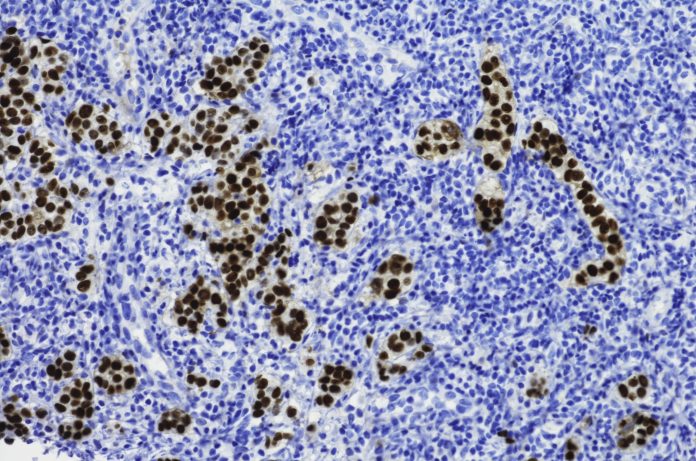
New research led by Penn State researchers has shown, for the first time, the mechanics of how breast cancer cells invade healthy tissues and lead to metastatic disease. The findings, published in the journal Advanced Science, demonstrates that the motor protein dynein was critical in driving the movement of cancer cells in soft tissue models, offering a potential new therapeutic target against metastatic breast cancer, which could fundamentally change how cancers of all kinds are treated.
“This discovery marks a paradigm shift in many ways,” said Erdem Tabdanov, PhD, assistant professor of pharmacology at Penn State and a lead co-corresponding author on the study. “Until now, dynein has never been caught in the business of providing the mechanical force for cancer cell motility, which is their ability to move themselves. Now we can see that if you target dynein, you could effectively stop motility of those cells and, therefore, stop metastatic dissemination.”
The discovery was made as the researchers used live microscopy to watch the movement of live breast cancer cells in two different models designed to mimic the human body. The first model comprised a two-dimensional model of collagen fibers showed how cancer cells move through and extra cellular matrix that surrounds tumors and showed the dynein was responsible for the movement of the cancer cells.
The second system was a three-dimensional model that was designed to mimic soft tissue. It was built using a network of microscopic hydrogel particles or microgels that were linked together in tumor-like shapes. The same activity was observed in three dimensions as the investigators saw in the two-dimensional system: dynein was “indispensable” in the spread of cancer cells within this system.
“Using these three-dimensional models that partially mimic a tumor, we discovered that if we block the dynein, the cancer cells cannot effectively move and infiltrate solid tissues,” said Amir Sheikhi, PhD, an assistant professor of chemical engineering and biomedical engineering at Penn State. “In both models, we found that dynein is extremely important for cell locomotion, which suggests a whole new method for cancer management. Instead of killing the cancer cells with radiation or chemotherapy, we are showing how to paralyze them. This is great news because you don’t really have to kill the cells, which is a harsh approach that targets both cancerous and healthy cells. Instead, you just have to stop the cancer cells from moving.”
Using this knowledge the team believes that inducing a form of cell paralysis could prove to be an effective means of preventing cancer metastasis following the surgical resection of the original tumor, as unlike current chemotherapy treatments it could prevent the spread of cancer without damaging health tissue and cells.
“The trick with chemotherapy is to kill the cancer cells slightly faster than the rest of the body—it’s a race against time,” Tabdanov said. “Chemotherapy causes a lot of damage to the body’s normal, healthy tissues while it is busy killing the cancer. If we instead contained the cancer, stopped it in its tracks, we could keep the healthy parts of the body healthy.”
While this finding is encouraging, the research team noted that any potential therapy to target dynein could be years away, as next steps are to move out of laboratory models to run human or animal trials.
The research project, which began as a collaboration between Penn State’s Department of Chemical Engineering and Penn State’s College of Medicine, eventually grew into a multi-institution partnership that included researchers at the University of Rochester Medical Center, Georgia Institute of Technology, Emory University, and the U.S. Food and Drug Administration.
Sheikhi has filed multiple patent applications related to the team’s newly developed platform with plans to use the technology to study a myriad of diseases, including other cancers.













